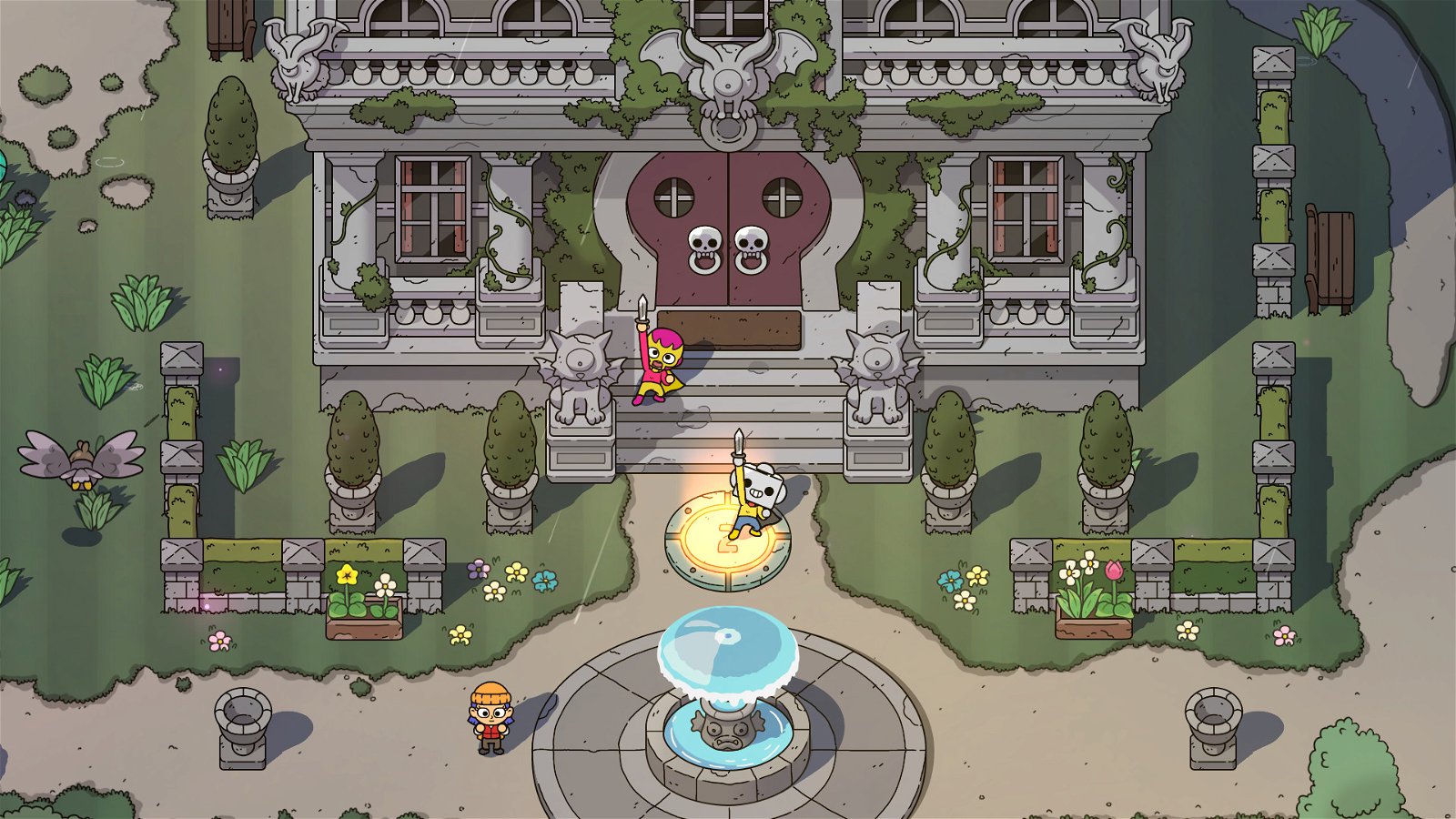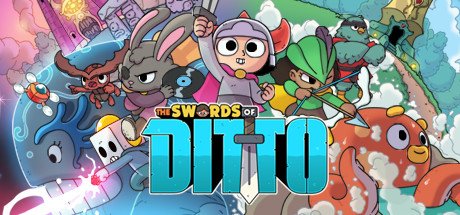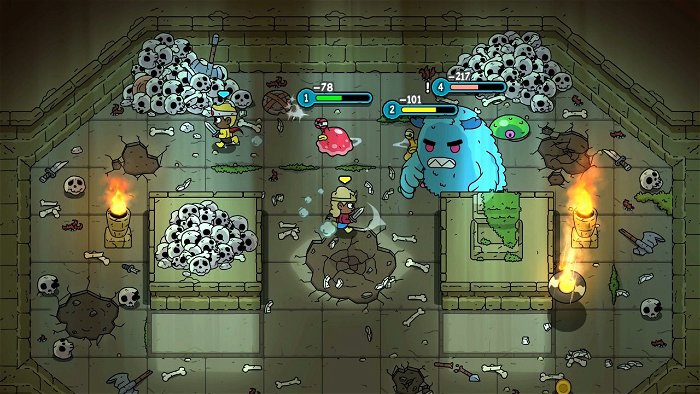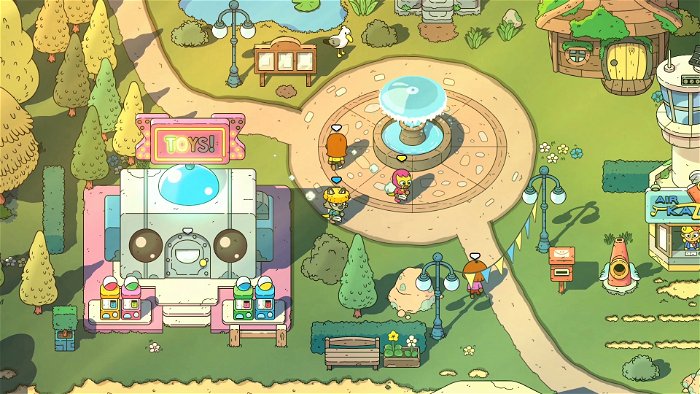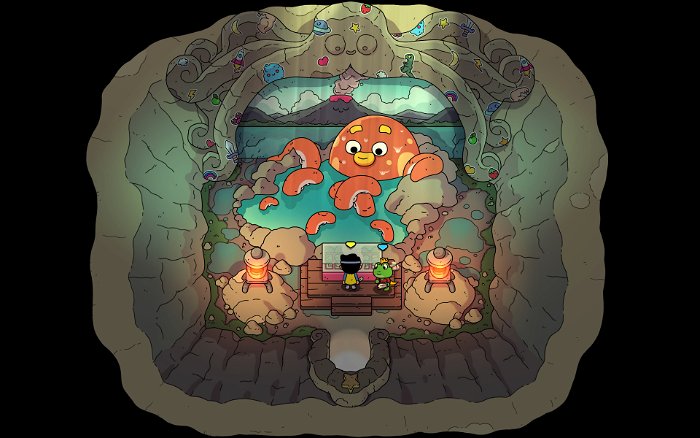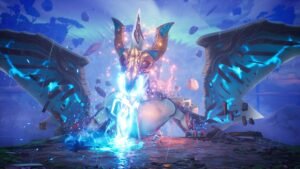I’ve heard the term “cartoon renaissance” bandied about quite a bit over the past couple of years. Shows like Adventure Time and Steven Universe shine as examples of Western animation that fall into this category. Though superficially colourful and bright, their widespread appeal extends beyond their ostensible target audience—children—precisely because they are unafraid to address complex, contemporary subject matter. The Swords of Ditto is a game that carries this same strain of cartoon DNA; cheerful and inviting, its jocular facade hides some dark subject matter layered beneath challenging “roguelite” gameplay that echoes classic Legend of Zelda games in more ways than one.
The central conflict in The Swords of Ditto is one with apocalyptic stakes. When the evil witch Mormo seizes control of the world and begins a reign of terror, only a hero wielding the titular Sword of Ditto can usher in an era of peace. The trouble is, the Sword only appears once every century. That’s where the player comes in: taking control of a would-be hero, they embark on a quest through a randomly-generated world to weaken Mormo and eventually defeat her once and for all. If the Sword falls in battle, their experience (read: character level) is passed on to the next hero in a hundred years’ time, but the world decays significantly in the interim. The forces of darkness grow stronger, and the cycle repeats until Mormo’s taint is cleansed forever.
I’ll stop using flowery language and get to the point: The Swords of Ditto is a roguelike action RPG that looks and plays like a 2D Zelda game. There are simple quests of the “kill X monsters” variety, but the only true objective is to reach the end of Mormo’s castle and defeat her. Though the player can augment their character with a variety of Toys (tools, in the traditional Zelda sense) and Stickers (stat- and ability-boosting equipment), they must either vanquish Mormo within four in-game days or lose everything they’ve acquired aside from their level. This includes any items they’ve acquired or progress they’ve made towards weakening Mormo before the final battle. Because enemies scale in level to match the player’s, each “run” starts on more or less equal footing as the last. I found this hugely frustrating, as I couldn’t find a way to give myself a foothold to make meaningful progress, especially after having numerous runs prematurely end because I ran out of healing items or found myself swarmed by enemies.
So how’s a hero supposed to make any headway? Luckily, there’s a gimmick that works in the player’s favour. By offering up a cumulative total of eight Celestial Tokens—a rare item found randomly throughout the world—across several playthroughs, the player can start receiving blessings from Serendipity, the deity of good fortune, for a fee. These blessings include extra lives, passing items down from hero to hero, and rewinding time. Truthfully, I feel like these concessions are what finally allowed me to start having fun with The Swords of Ditto; until I gained access to Serendipity, I wasn’t enjoying myself because I felt like my actions were pointless in a greater context. It didn’t matter how many bosses I killed, how many Toys I got, or how much I weakened Mormo, because everything was essentially reset to zero upon each hero’s inevitable death. Serendipity adds a meaningful sense of progression to what would otherwise be an endlessly cyclical quest.
Yet even after coming to grips with what The Swords of Ditto expected of me as a player, I still found aspects of its design unfriendly, or worse, tiresome. As objectionable as this critique may sound, I found the game to be entirely too random. The idea of every hero having a unique world to explore is exciting in theory, but tedious in practice. I plumbed the depths of an endless array of indistinguishable caverns and temples, with the same predictably simple puzzles in slightly different configurations. Sometimes I’d spend ages in an awkward dungeon only to receive a handful of money at the end; other times, I’d zip through a hidden cave and find a powerful Sticker, only to lose it forever after an unexpected death. Fast travel points exist but mean little because they disappear between playthroughs. Even the central hub town is rearranged for every hero, which I found particularly irritating because I never felt like I had a comfortable “home base” where I could rest and reorient myself.
Much of my distaste stems from the way that The Swords of Ditto defies “game logic” due to the randomized nature of its design; essential pathways are sometimes placed behind opaque buildings, dungeon rooms occasionally expand outward into awkward empty space, and so on. The Swords of Ditto misunderstands the fundamental truth that Zelda games work precisely because they’re hand-crafted in such a way that all of their pieces fit together mindfully. It also bears mentioning that local co-op exists, but it simply creates a body double of the current hero with a different appearance, and there is so little in the way of character customization or progression that it feels half-baked.
I don’t mean to rag endlessly on The Swords of Ditto. In fact, I truly admire the scope of what developer onebitbeyond set out to accomplish—I can’t imagine how many complex lines of code are running behind the scenes to produce a unique world for every single player. And there’s no denying that The Swords of Ditto oozes charisma; its art style is modern and polished, evoking Cartoon Network sensibilities with adorable characters and monsters. (I got to play as a super-cute frog-person once! That was rad.) Whenever I was able to focus on the individual pieces that make up The Swords of Ditto—its visual panache, the compelling premise at its center, its surprisingly intriguing backstory—I had a decent enough time. But time and again, my interest turned to irritation as I failed to either make meaningful progress or to connect with my custom-tailored, but ultimately lifeless, world.
